I was assigned by the Provincial Ornamental Plants Association to prepare documents for the hundred-year-old trees in Long An to honor the Heritage Trees (CDS) of Vietnam, which were reviewed and decided to be recognized by the Vietnam Association for Conservation of Nature and Environment. It is known that the founder of this Association is a famous scientist who spent his youth carrying a backpack following army units marching through forests from the North Pole, the Central Highlands to the South Pole,... doing scientific research on animals, plants and forestry in the midst of falling bombs and exploding bullets. That is Professor, Doctor of Science Dang Huy Huynh, the first Vietnamese person to be awarded the title of Hero of Biodiversity by the world. At the age of 90, he is still diligently researching science. Professor, Doctor of Science Dang Huy Huynh is Chairman of the CDS Council, Vice Chairman of the Vietnam Association for Conservation of Nature and Environment, and has received the Ho Chi Minh Prize twice.
Many people still wonder about the meaning of CDS, so let me briefly talk about Vietnamese CDS below. Everyone knows that heritage is the property and relics left by the ancients. CDS are trees that have lived over a hundred years, meeting the criteria of stature, history, culture, spirituality, etc., reviewed and recognized by the Vietnam Association for Conservation of Nature and Environment in Hanoi with a Council of prestigious scientists.
Previously, scholar Vuong Hong Sen was famous for his collection of antiques, owning hundreds of rare antiques worth millions of dollars that Mr. Vuong could not sell. Before he passed away, he wrote a paper donating all his antiques to the State to be placed in the National Museum. Mr. Vuong was the author of many antique monographs. His book " The Hobby of Antiques " was very famous. In particular, he wrote about ancient trees in Saigon, stating the origin, address of each tree, where it was imported from, by whom, when,... and the characteristics, cultural and historical values of each type of ancient tree that he had lived for nearly a century and understood.
Read Green Relics in the historical magazine Xua & Nay (February 1997) about ancient trees from the Thang Long - Dong Do - Hanoi period with photos stored in a museum in France, including the banyan tree on The Huc bridge (Hoan Kiem lake, Hanoi), taken by doctor Hocquard in 1884 when the tree was still green, now the tree has lost its strength - "carrying" a millennium on its trunk. Or the banyan tree on the ferry to Huong pagoda taken by Pierre Gourou more than a century ago, the tree still has strong vitality. And the hundred-year-old banyan trees "standing the test of time" in Hue still bloom with pure yellow and white flowers, exuding a strong fragrance. In the Hue Citadel, many ancient banyan trees attract tourists to the Hue temples and mausoleums; each tree has a twisted, flexible body with a shape that even highly skilled bonsai artists may not be able to create.
Xua & Nay also mentioned the story of the thousand-year-old banyan tree in front of My Chau hermitage on the Co Loa relic - the first capital of our country during the Au Lac and An Duong Vuong periods. In 1989, by the end of November, the tree was still lush, but the middle part of the tree had termites. Four years later, the whole body of the thousand-year-old banyan tree was rotten and withered. In 1995, people built a support frame and used young trees to parasitize the old tree, watering it to stimulate growth every day, but it was too late, there was no way to save it.
Xua & Nay warns: Most of the communal houses, temples, pagodas, mausoleums, and scenic spots in our country are associated with some ancient banyan, bodhi, sanh, si, gao, muom, longan, thi,... trees, creating a harmonious balance with ancient architecture. When ancient architecture is lost, old bricks and tiles can still be restored to old architectural works, but when ancient trees are lost, they are lost forever, leaving a gap in the memory of the social community...
Re-reading the report "Rescuing a hundred-year-old tree in Hue" (Tuoi Tre - February 1, 2021) about the process of reviving a hundred-year-old acacia tree in the Citadel - Hue, which was knocked down by storm No. 13 in 2020, sending all its roots up to the sky, the Secretary of the Hue City Party Committee posted the news online, expressing regret that the ancient tree had survived hundreds of storms and still stood, until storm No. 13 in 2020, when it fell, causing many Hue people to come to visit, everyone called the ancient tree "old man 13" with infinite regret; they told each other many memories of the tree's life, the life of the people and the life of the village, hoping that "old man 13" would be resurrected to live with life. Many experts were invited to save "old man 13". On November 16, 2020, when the crane lifted "Old Man 13" about 3m high to move it into the planting hole, the crane cable suddenly broke, "Old Man 13" fell to the ground, making everyone pale, thinking about spiritual things, because the crane had a load capacity of 50 tons and the calculated cable was surplus to the tree's weight. So the construction team ran to buy a bunch of incense to burn, pray,... After 2 months of settling in the planting hole with scientific measures, the ancient tree revived, sprouted plumply, and miraculously burst into life, making people in the area come to see the "sacred tree" every day with overflowing emotions,...
Suddenly remembered the story of the ancient mangrove tree over 300 years old on the bank of the Vam Co Dong River near the Ong Ban Quy temple (Nhat Ninh commune, Tan Tru district). According to witnesses, during the resistance against the French and Americans, this was a place to hide weapons, a liaison station and a guerrilla post located neatly in a tree trunk twice as big as a rice barn, incurably damaged by termites, by the end of the 80s of the 20th century, the mother mangrove tree had dried up and died, uprooted and collapsed, leaving behind a bunch of young mangrove trees, not sure what happened to them now?
Thanh Nien newspaper recently reported that in Quang Ngai province, there is a 200-year-old kapok tree that is considered a treasure by the local people, because in 1930, a hammer and sickle flag appeared on this tree, marking the presence of the Communist Party of Vietnam. Quang Ngai Provincial Youth Union has mobilized regular forces to take care of and restore the local CDS documents.
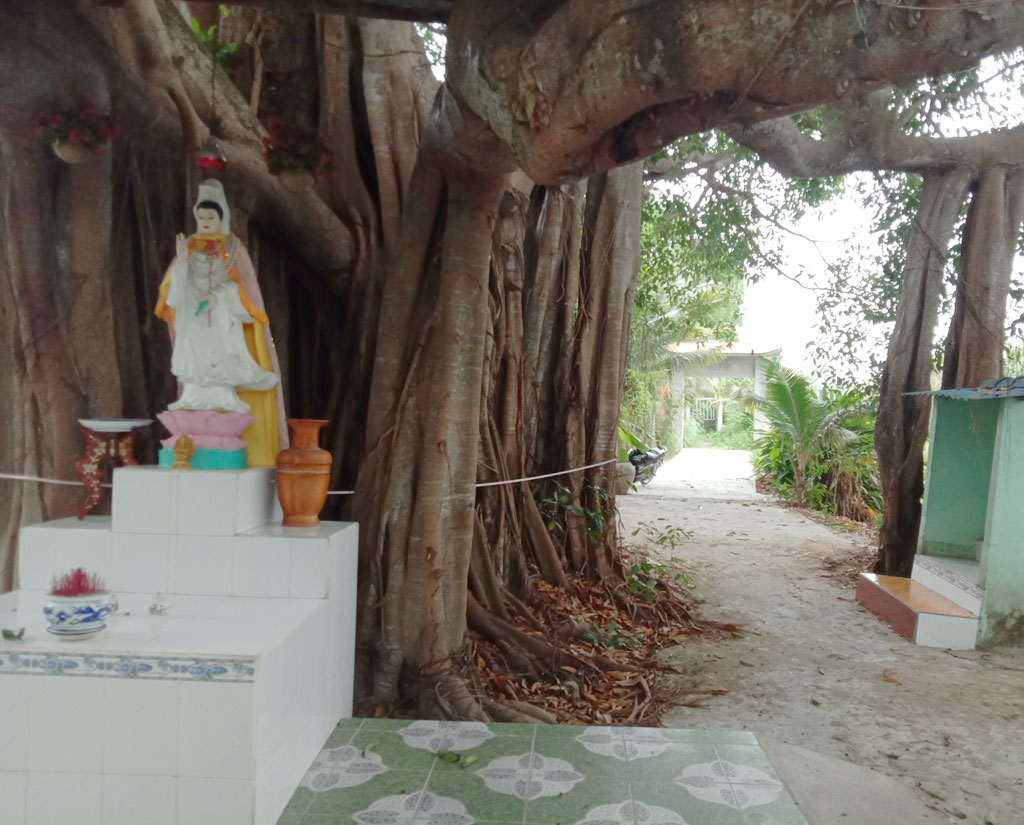
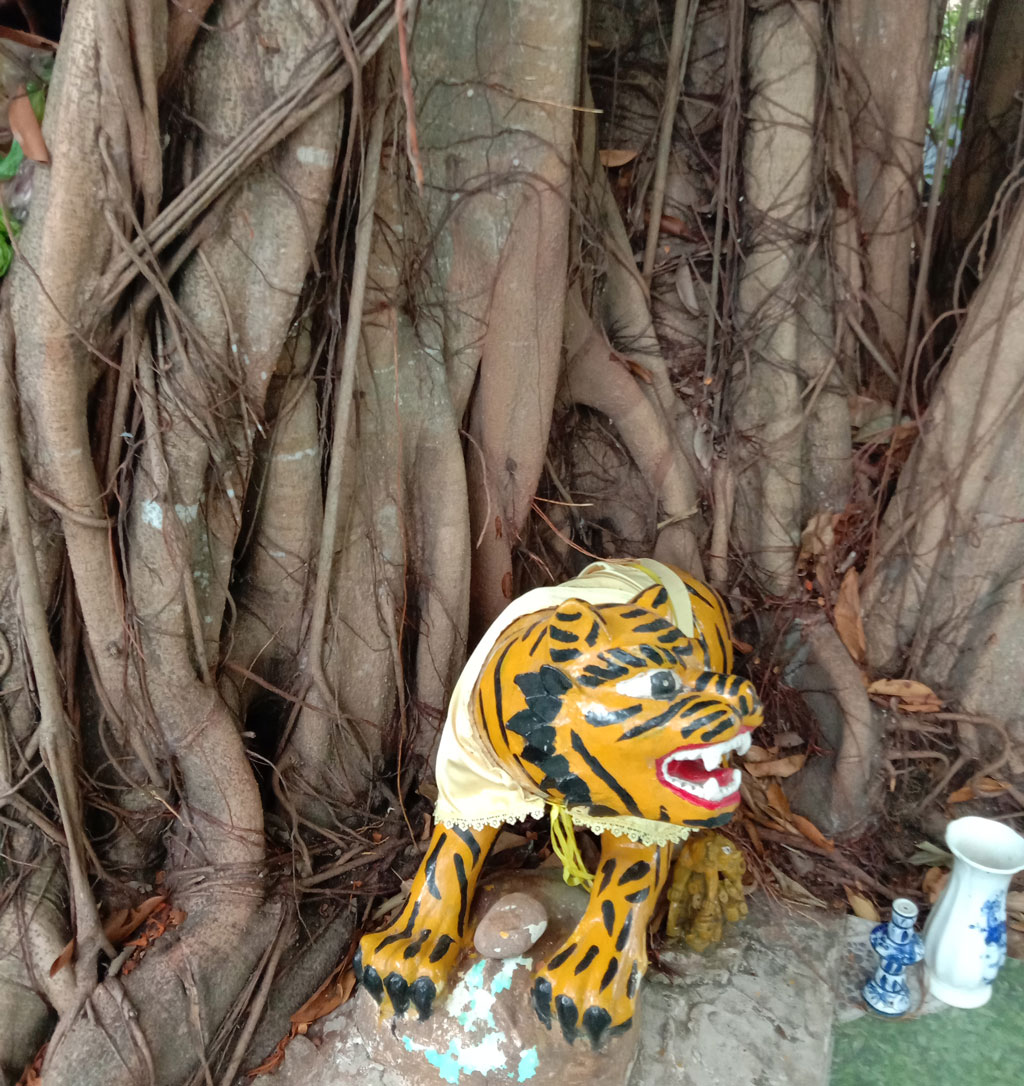
Recently, we went to Binh Tay hamlet, Tan Binh commune, Tan Tru district, to make a CDS file for the banyan tree on Cau Tram canal flowing into the mouth of Nhut Tao river. We measured according to CDS specifications: Base - 1.3m above ground - 13.5m in circumference. Two secondary roots on the left and right sides, each root is too big for a person to hug. On the tree canopy, there are many wide-spreading branches, the canopy diameter is more than 30m, there are 2 branches in the middle of the canopy that curve like 2 dragons. At the base, on one side is a tiger statue, on the other side is a platform to worship the statue of Buddha Quan Am. The square yard around the base is full of shrines of all kinds; "Ba Dang My shrine" (origin unknown).
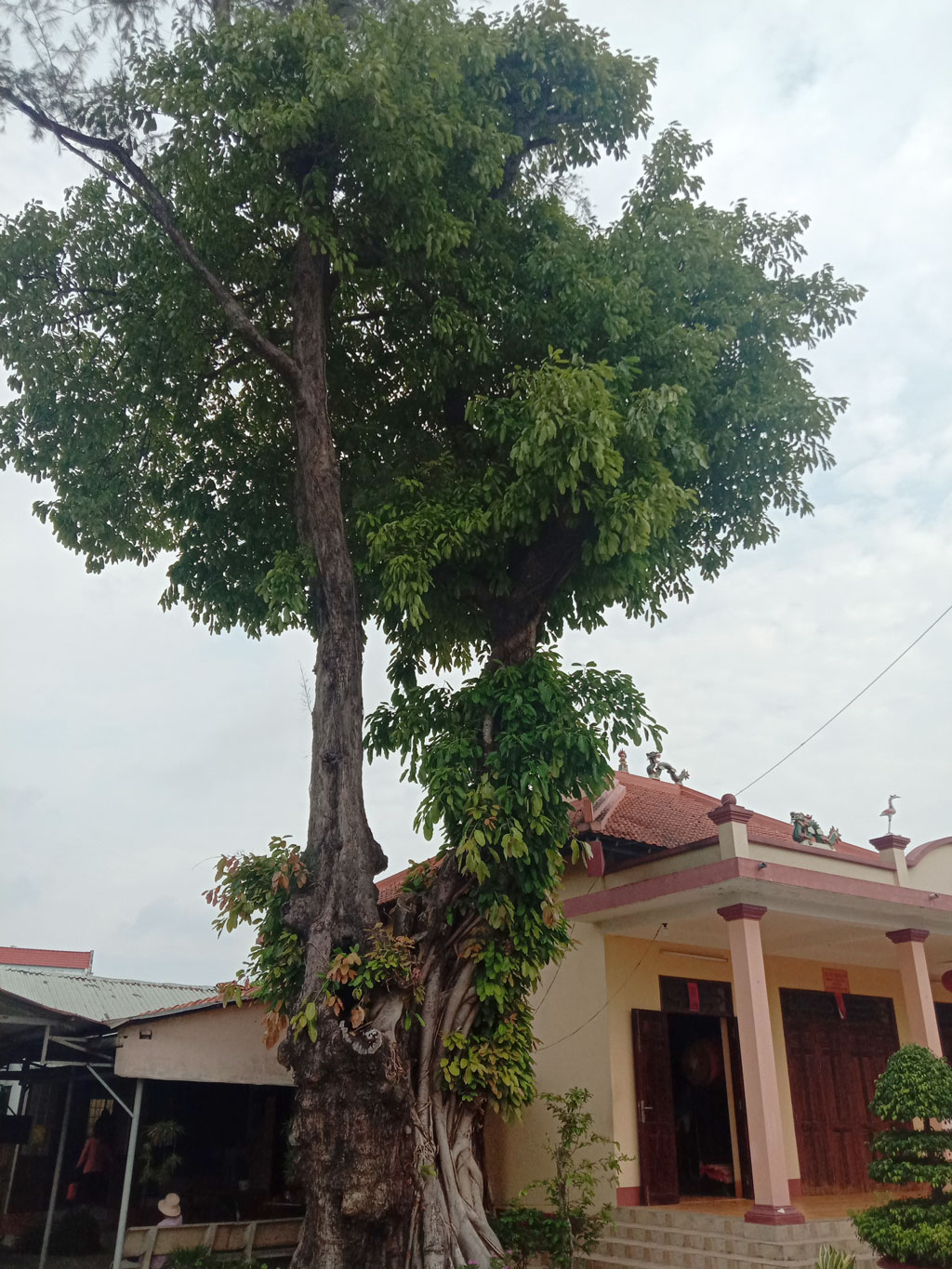
And the ancient tree of Binh Yen Dong communal house, ward 4, Tan An city, temporarily called the poplar tree with the root of the poplar. According to the explanation of the man from this communal house, the poplar tree was 60-70 years old, then the poplar tree from somewhere poked into a hole in the poplar tree, took root in the ground, grew up, both the poplar and poplar trees stuck together to form a majestic ancient tree leaning against the roof of the communal house. About 3m above the ground, it split into 2 tops, the left side is the higher poplar tree, the right side is the lower poplar tree, both leaning against the roof of the communal house and living peacefully.
In connection with Pho Hien, Hung Yen province, there are two very large ancient banyan trees. On top of them, there is a banyan branch that crosses the two trees like a bridge. On top of that, there grows a banyan tree and a banyan tree, which looks very strange. People call it a hybrid banyan tree.
Above is some information about CDS, which is a historical witness through many generations. Such as the silver tree at Thien Co Temple (Viet Tri City, Phu Tho Province) whose age is determined by scientists to be over 2,200 years old - associated with the history of the Hung Kings' Land. Or the 9 ebony trees recognized as Vietnamese CDS on the occasion of the 1,000th anniversary of Thang Long - Hanoi in October 2010. Hopefully, the 2 newly discovered ancient trees will be honored as Vietnamese CDS, increasing the total number of Vietnamese CDS in Long An Province from the current 23 trees to 25 trees./.
Quang Hao
Source link



![[Photo] Prime Minister Pham Minh Chinh chairs meeting on draft Resolution of National Assembly on International Financial Center in Vietnam](https://vphoto.vietnam.vn/thumb/1200x675/vietnam/resource/IMAGE/2025/5/22/d398664ff1a140629169ea5a24e1b4d0)
![[Photo] General Secretary To Lam chairs a working session with the Central Internal Affairs Commission](https://vphoto.vietnam.vn/thumb/1200x675/vietnam/resource/IMAGE/2025/5/22/3b7790f499da45b2803d8ae253207ef1)
![[Photo] T&T 1 and Ho Chi Minh City 1 People's Police Teams won the men's and women's team championships](https://vphoto.vietnam.vn/thumb/1200x675/vietnam/resource/IMAGE/2025/5/22/39db06ae67cb4001b7a556e8d9a56d07)
![[Photo] Press delegation meeting to visit Truong Sa and DK1 Platform](https://vphoto.vietnam.vn/thumb/1200x675/vietnam/resource/IMAGE/2025/5/22/6b8d232877ec421a9e8187d83b9f8006)















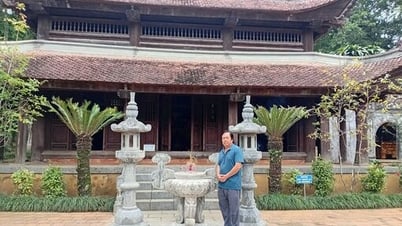











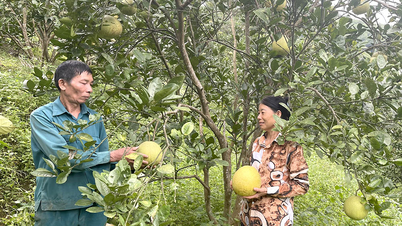

































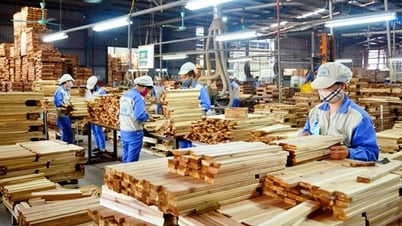















![[Podcast] Week introducing more than 500 OCOP products in Hanoi](https://vphoto.vietnam.vn/thumb/402x226/vietnam/resource/IMAGE/2025/5/22/d144aac2416744718388dbae3260e7fd)





Comment (0)